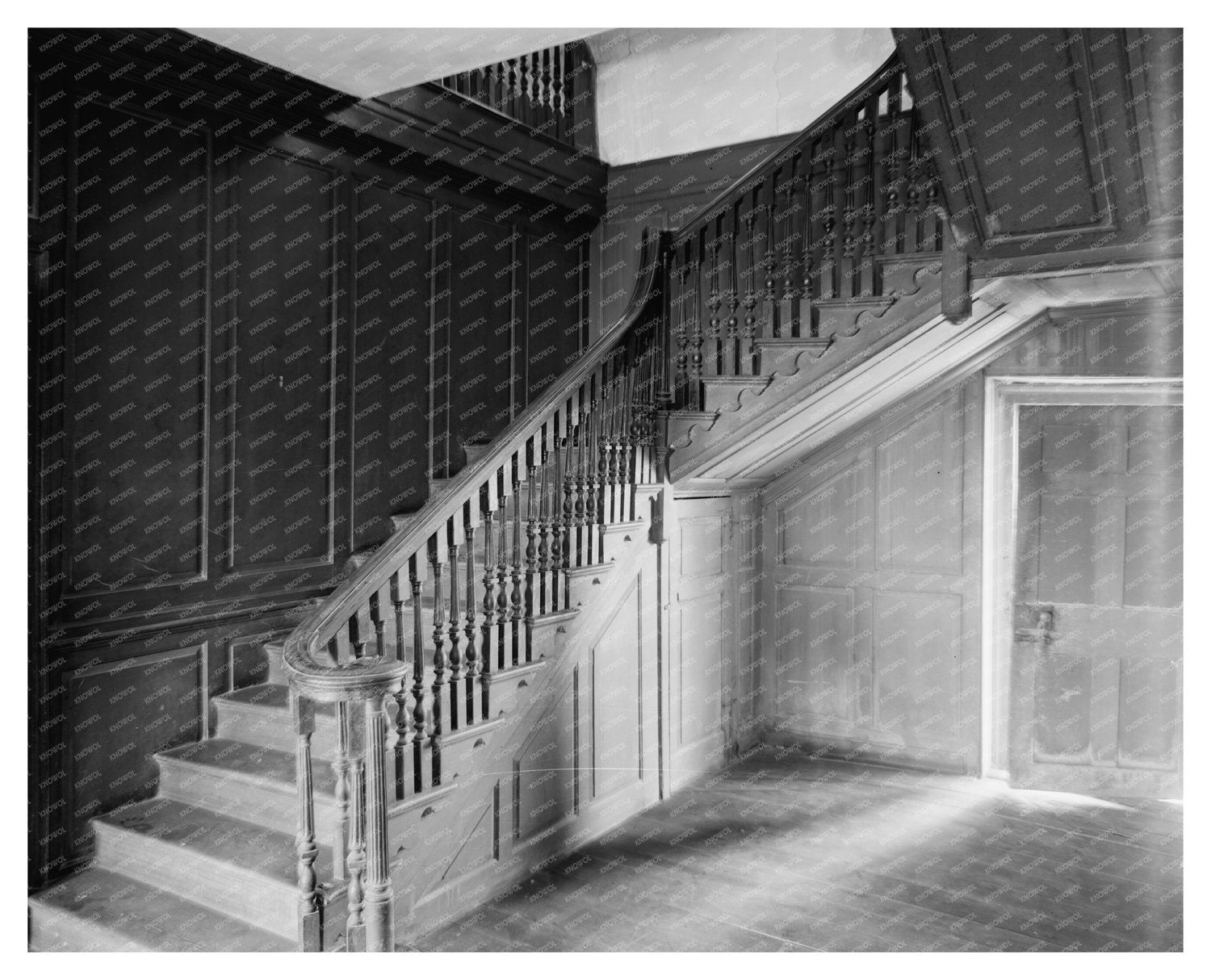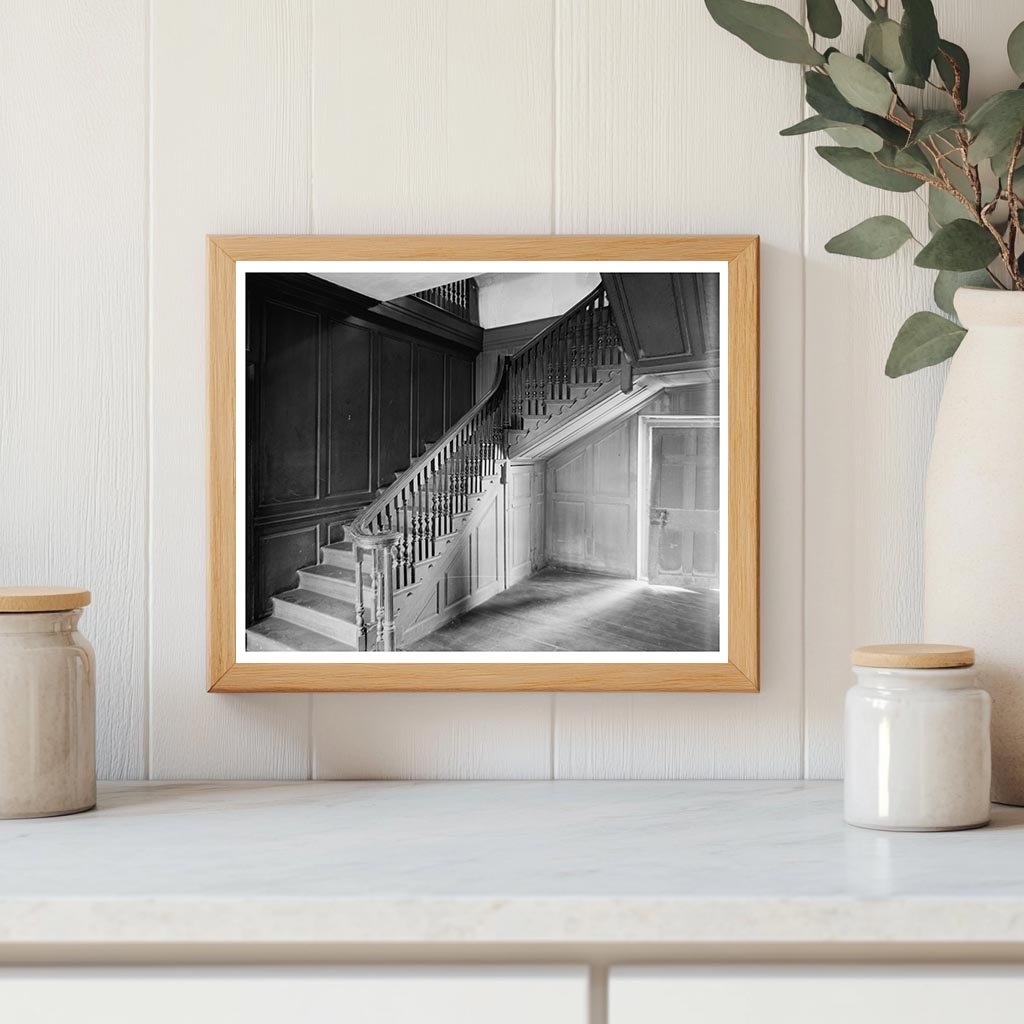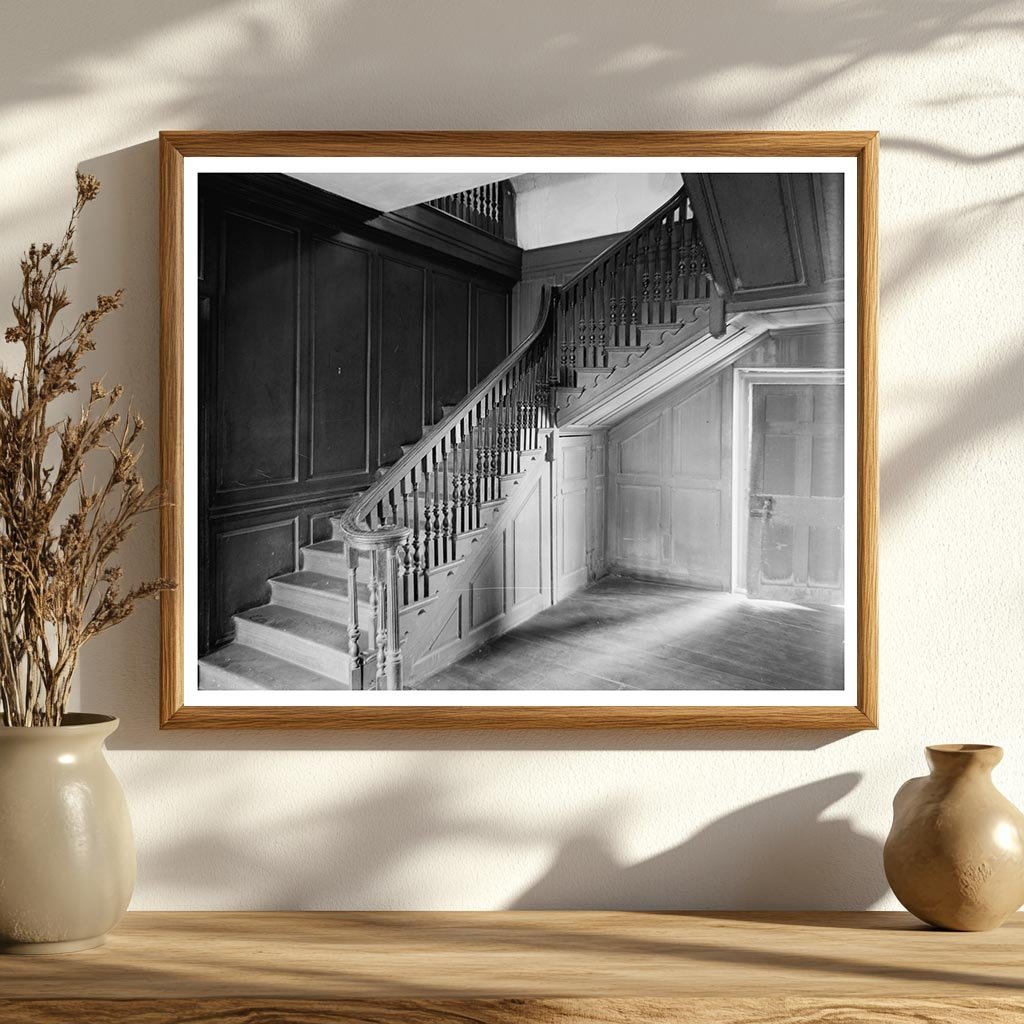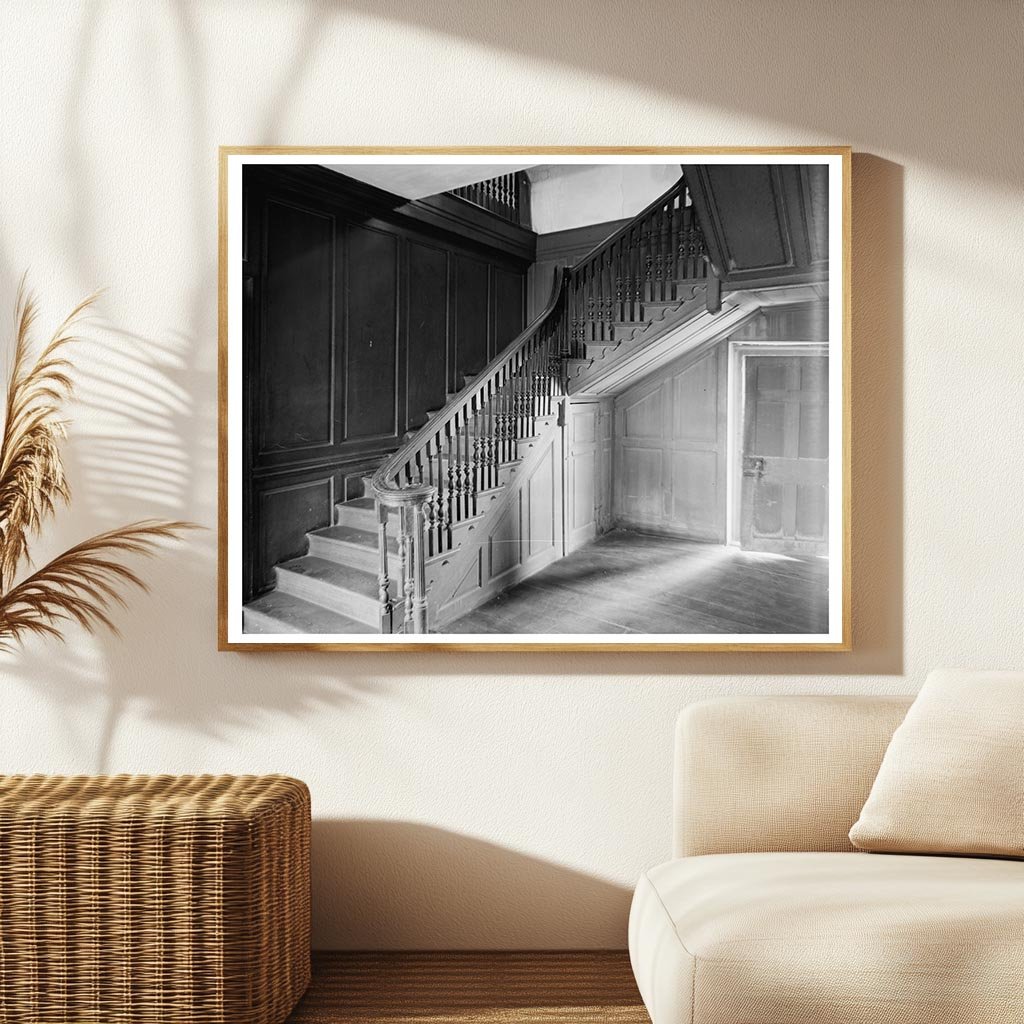



1914 Architectural Details of Chaptico, Maryland
This vintage photograph, created by Frances Benjamin Johnston, captures architectural details from Chaptico, located in St. Marys County, Maryland. The image features a significant doorway and hand railing, showcasing the craftsmanship prevalent in the early 20th century. The photograph is part of the Carnegie Survey of the Architecture of the South, which aimed to document and preserve American architectural heritage.
Taken around 1914, the photo represents a time when Chaptico was evolving, reflecting both historical and cultural elements of the region. The survey itself serves as a vital resource for understanding the architectural styles and residential designs that characterized the southern United States during this period.
Johnstons work contributes to the appreciation of early American architecture, emphasizing the intricate details that define spaces in homes and public buildings. This photograph is not just a visual representation but also a historical record that invites viewers to explore the architectural legacy of Maryland.

1914 Architectural Details of Chaptico, Maryland
